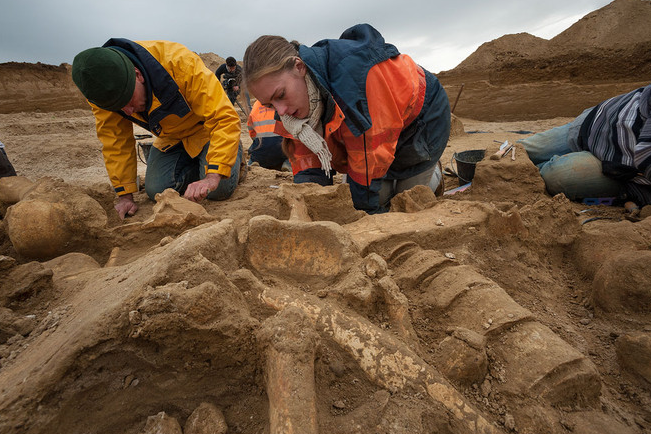"Helmut" the Mammoth Hunted and Cut Up by Neanderthals Discovered Near Paris

An almost complete skeleton of a woolly mammoth believed to have lived between 200,000 to 500,000 years ago has been found near Paris, researchers announced on Tuesday.
Archaeologists from the National Institute for Preventive Archaeological Research said that the remains were found next to two flint blades, suggesting that Neanderthal hunters were probably cutting the animal up for meat.
"The discovery of a flint flake, a direct relationship with the elephant, shows the human intervention on the carcass," researchers wrote in a news release.
The remains were discovered along the Changis-sur-Marne riverbank, about 30 miles northeast of Paris, and include a femur, pelvis, jawbones and four connected vertebrae.
Researchers said that the Ice-Age beast named "Helmut" would have been around 9ft tall, with even longer tusks. The creature would have roamed the countryside of Paris and was probably a young adult or 20 to 30 years old when it died, AFP reports.
The mammoths are believed to have become extinct as a result of the combined effects of climate change, contagious diseases and human hunting.
However, some of these giant creatures have been preserved for centuries in their organic state after being frozen.
Researchers said that the latest find is considered a usual discovery because only three corpses have been dug up in France in the last 150 years.
French archaeologists began digging up the animal in July after spotting it in the Gallo-Roman site.
The mammoth was easy to excavate because it was buried under sandy soil, and archaeologists hope to reconstruct its last movement.
Published by Medicaldaily.com



























